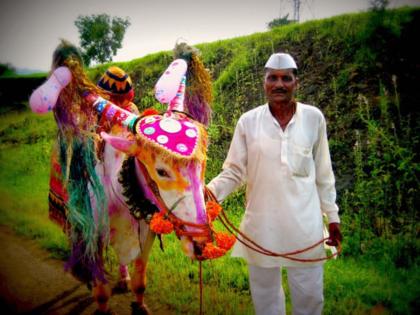Bail Pola 2025: Honoring the Bulls of Maharashtra – Past, Present and Future
By Lokmat Times Desk | Updated: August 23, 2025 06:54 IST2025-08-23T06:51:49+5:302025-08-23T06:54:26+5:30
Pola is a vital agrarian festival celebrated in parts of Maharashtra, Chhattisgarh, and Madhya Pradesh, dedicated to honoring bulls ...

Bail Pola 2025: Honoring the Bulls of Maharashtra – Past, Present and Future
Pola is a vital agrarian festival celebrated in parts of Maharashtra, Chhattisgarh, and Madhya Pradesh, dedicated to honoring bulls and oxen — the unsung yet crucial partners in traditional farming. While this tradition is not as well-known outside rural India, Pola holds immense cultural and symbolic importance for farming communities.
The origin of Pola is difficult to trace, but it is undoubtedly linked to ancient agricultural practices. In Vedic times, across various Indian customs, animals such as bulls and cows were revered for their significant role in sustaining agricultural life. Over many generations, farmers have dedicated a specific day to express gratitude to their animals, particularly bulls, who make farming possible and thus support families and ensure the prosperity of their communities.
Pola is celebrated on the Amavasya (New Moon Day) in the month of Shravan (July-August), which marks the end of the sowing season. By this time, the bulls have completed the most strenuous phase of their work and are given well-deserved rest. On this day, they are recognized for their invaluable contributions to the agricultural life of the community.
The festival begins with the cleaning and grooming of the bulls, which involves painting their horns and adorning them with vibrant garments, bells, garlands, and beads. Farmers perform a special Puja, placing turmeric and kumkum on the bull’s forehead, along with offering sweets and delicacies.
A highlight of the celebration is the Bail Pola procession, where decorated bulls walk through the village accompanied by music and folk dances, like Lezim, creating a joyful atmosphere that values and celebrates tradition. Homes are decorated, and families prepare special dishes such as Puran Poli, Karanji, and Chakli.
In recent times, Pola has gained more prominence, with local governments and cultural organizations hosting Bail Pola exhibitions, bullock decoration competitions, and traditional food fairs to engage younger generations and ensure the continued celebration and respect for this wonderful tradition. Pola is a reflection of the deep bond between humans and animals, showcasing how this relationship sustains and enriches communities. It also highlights the rich rural traditions that are an integral part of India’s cultural fabric.
This article is authored by Arhaan Mehta
Open in app